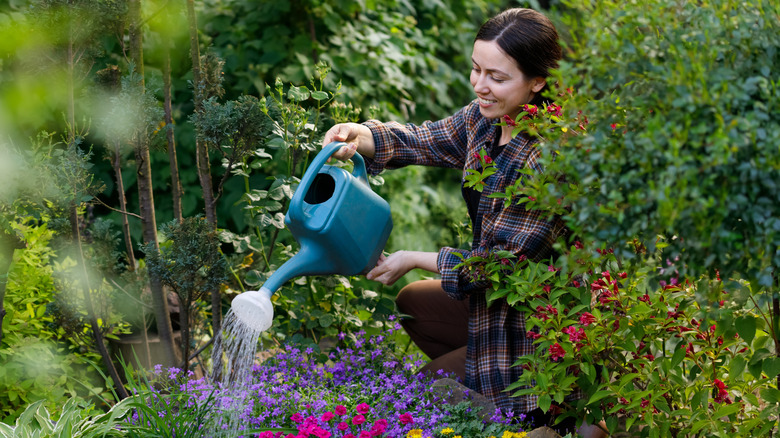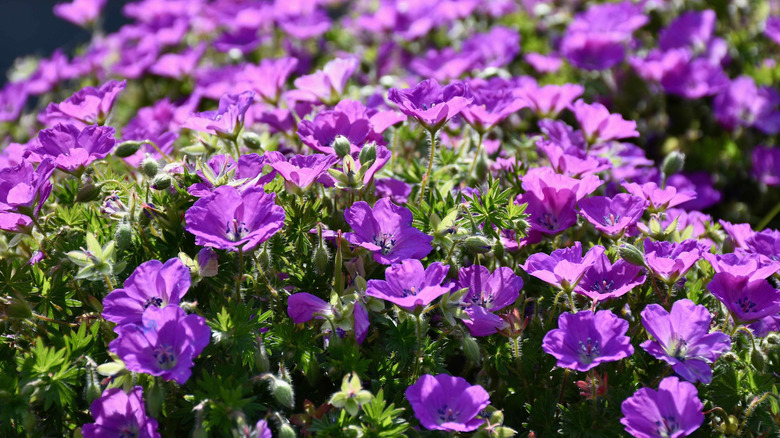The Dazzling Purple Plant That'll Effortlessly Fill Your Yard With Lasting Blooms
For some people, gardening morphs into a tedious process demanding their attention after a hectic weekend. With the constant worry of remembering to water the plants on time, removing weeds, and identifying which plants are dying, it's easy to lose interest. That is why when a plant like the bloody cranesbill geranium (Geranium sanguineum) comes along, gardening starts to feel like a hobby again.
Everything you need to know before planting geraniums starts with understanding their growth process. Bloody cranesbill is native to Europe and some areas of Asia, which means it is easy to grow in diverse climates. Thus, these plants thrive in USDA Hardiness Zones 3 through 9 and generally grow in full sun to partial shade. They can easily grow in all kinds of soil, be it moist, well-drained, or clay-based soil, which keeps the roots healthy and flowering on schedule.
Reasons why you should plant these dazzling purple geraniums in your garden go beyond easy maintenance. Geranium sanguineum is engineered to suit nearly every type of gardener, be it beginners just starting out with their first flower bed or seasoned pros who want some low-maintenance horticulture. With the right space, sun, and good drainage, this dazzling plant becomes the gift that keeps on blooming.
A no-fuss floral companion for vibrant, pollinator-friendly yards
The plant's charm does not stop at color. Their vibrant magenta color attracts butterflies and bees who rely on these plants for nectar. And for gardeners who are fed up with deer and rabbits attacking their fruits and flowers, the bloody cranesbill is the perfect plant to keep them away.
While bloody cranesbill may seem easy to plant and maintain on the surface, it does follow its own set of growth rules. It forms a soft mound or bush (maybe about 4-9 inches tall) and can spread about 2 feet wide. You can plant it in awkward in-between spaces, where taller plants would feel too heavy, or in areas that require structure. These cup-shaped flowers keep their space without overwhelming neighboring plants, and are ideal for border edges and perennial beds. However, be aware that there are some avoidable mistakes that could kill the geraniums in your garden. For instance, avoid overwatering or planting them in dense or poorly draining soils, and see that your plants are happy and healthy.
To really elevate your planting scheme, try it as a companion to taller summer blooms like Coneflower (Echinacea purpurea) or Woodland Sage (Salvia nemorosa). The spikey vertical forms of these plants create a striking contrast to the rounded, ground-hugging mounds. This kind of layering brings rhythm and dimension to gardens. So, whether you're filling a hollow space, lining a patio, or building a layered pollinator-friendly garden, the bloody cranesbill will make everything picture-perfect!

